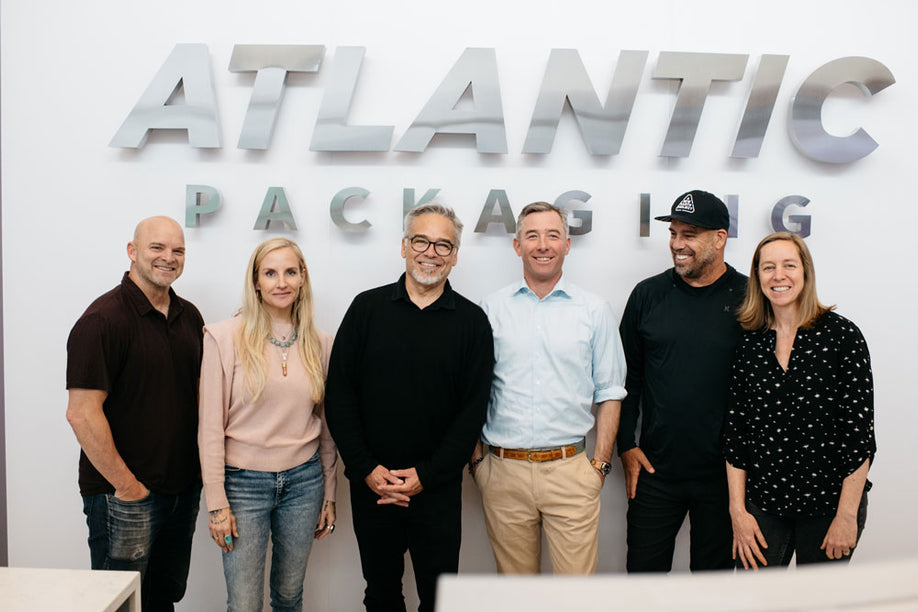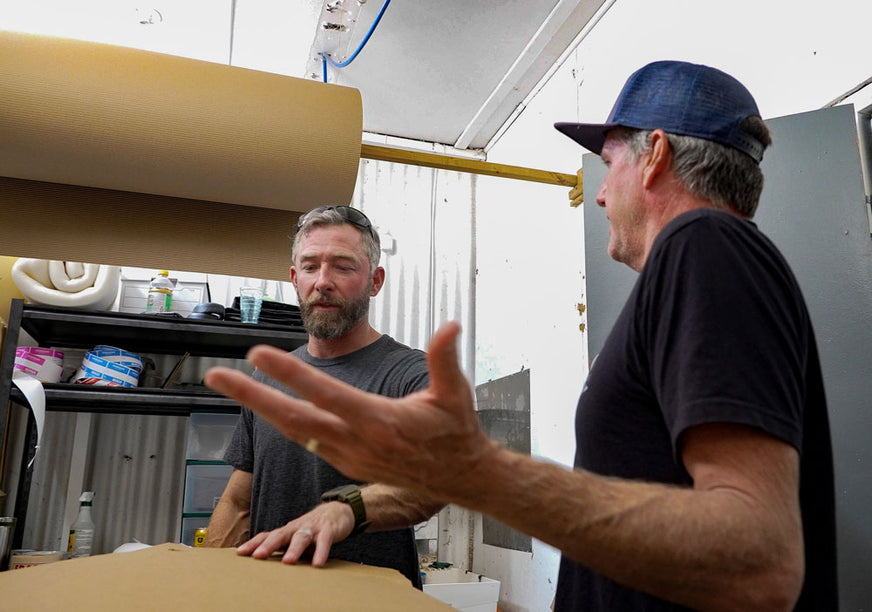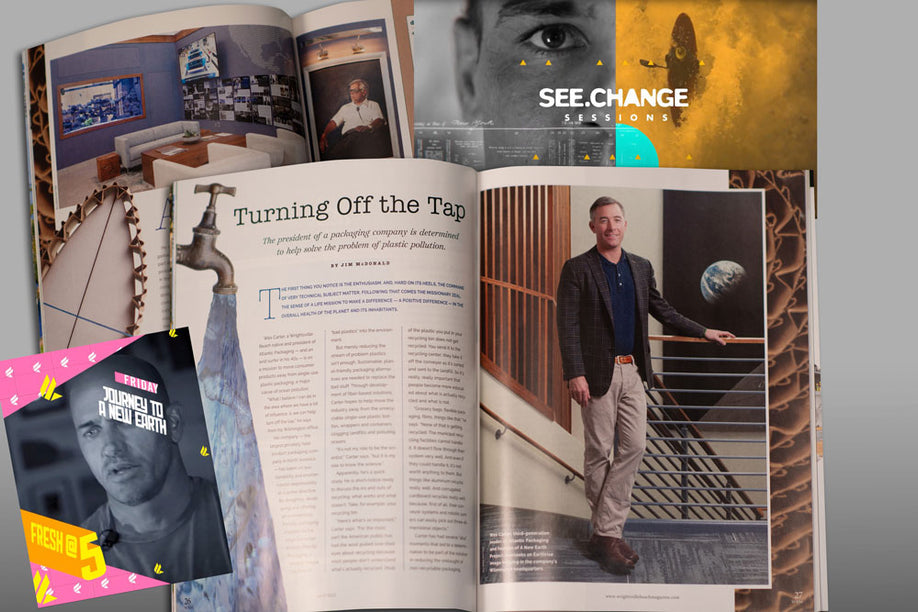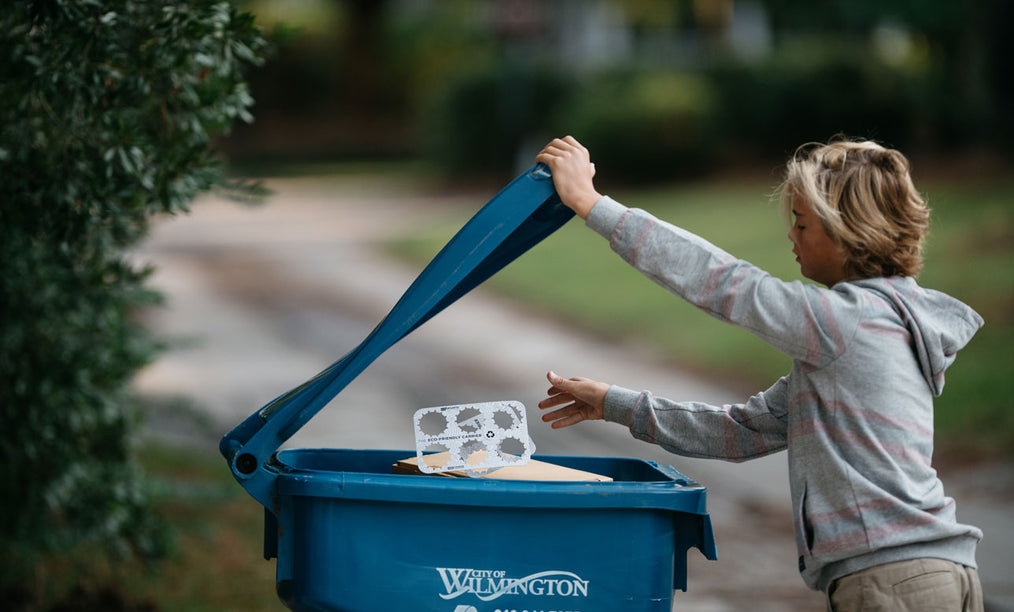Our Dirty Little Problem
Here in the U.S. we're pretty darn good at collecting waste. So good, in fact, that it's never a top-of-mind issue until garbage collectors strike.
So when it comes to waste management most of us are under the impression we're doing a great job. And on the surface, we were, relative to the rest of the world.
But very few of realized that for the better part of 30 years a growing portion of our waste was being shipped to China.

In the early 2000s, municipalities eager to reduce costs were quick to take China up on offers to cheaply handle the costs associated with recycling. Unfortunately, our homegrown recycling infrastructure essentially disappeared as a result.
Then our "recycling" efforts came to a crashing halt in 2018 when China finally said, "No more" to the rest of the world. They'd had enough. Here in the U.S., state and local governments have been scrambling for a solution ever since.

All the while, our reliance on plastics (especially single-use plastics) has increased at a staggering pace. Indeed, we've produced and consumed more plastics the past five years than the 70s, 80s, and 90s combined. And these plastics are now overwhelming our landfills.
Thanks to our gutted recycling infrastructure, the US is home to the worst recycling rate of plastics in the developed world despite the fact that we're the largest consumer, producer and global proliferator of the stuff.
The Extended Producer Responsibility Advantage
As of right now, there's no sign of that trend slowing, but there are ambitious bills taking aim at the problem. And believe it or not, there's widespread public support for tackling this issue.
The bulk of these proposals revolve around extended producer responsibility (EPR) programs that are growing in popularity around the world.
EPR programs are nothing new, but they vary widely in size and scope.
Most of us are familiar with bottle bills, where we consumers pay a refundable deposit for beverage containers. That's a very clean and simple form of EPR.

Not surprisingly, the higher the refundable deposit is, the higher the recycling rates go. Sweden, for example, captures more than 90% of their bottles, because those deposits go as high as .40 cents per bottle.
Bottle bills are clean, simple, and easy to understand. Several states have them. But doing the same for packaging as a whole is a far more complex problem. Nevertheless, larger EPR bills are taking square aim at that issue. Here are five key issues proponents of EPR aim to solve with these bills.
Five Ways EPR Bills Address the Issue
1. Waste Producers Pay
Today, we taxpayers are still paying for recycling efforts that simply aren't happening. It's worse than a bailout, in essence, because we're getting nothing in return. EPR proposals address this by forcing producers to share more responsibility for handling the full life-cycle of their product. What's more, consumers and producers will be incentivized to be more responsible.
2. Retrains Consumers on Recyclability
Consumer confusion and disillusionment about recycling is at an all time high, and these bills address the problem through improved labeling, separation, and education efforts. Think recycling 2.0.
3. Improves Effectiveness
Rebuilding our recycling infrastructure will mean shorter hauls, improved sortation, and more availability of recovered materials that can be reused at a cheaper rate because it will be more available at scale.
4. Incentivizes Recycling Innovation
Multi-material packaging products like flexible plastics can be problematic for current recycling systems. EPR bills incentivize the kind of innovation that will help solve these problems, especially in food packaging, where replacing plastics is a huge challenge.
5. Design for Recyclability
Up until now, producers have had zero financial incentive to reduce environmental externalities with their packaging. EPR bills seek to change that. By incentivizing producers to design around packaging that's easier to recycle from the start, the entire recycling stream gets enhanced, and overall waste is reduced.

When Packaging EPR Programs Work
Broader packaging EPR bills are far more complex than bottle bills, but if implemented wisely, will have far reaching positive impacts well beyond their borders. This is especially true of the California EPR bill SB 54, which is the largest packaging EPR bill ever passed.
The key difference with a wider packaging EPR bill is the producer responsibility organization (PRO) at the center of it.
These organizations, which are powered and funded by anyone producing or selling goods made of the materials targeted in the legislation, are responsible for the financial and/or operational handling of those materials at end-of-life.
PROs, therefore, take a key role in the waste management process. The fees they raise might go directly to such efforts, or to municipalities in the form of reimbursements for the handling of them.
Those who qualify as producers are defined by each specific law, but is usually means brand owners. If brands want to reduce their fees due to the PRO, they'll use packaging materials that are easiest to recycle. The more difficult they are to recycle (decisions decided on by the PRO and any oversight body) the higher the upfront fees to the PRO will be.
California's Golden Opportunity
California's EPR Bill SB 54 passed in late June of 2022. It's also known as The Plastic Pollution Reduction and Producer Responsibility Act. The PRO responsible for achieving the bills reduction targets will be launched in 2024, and by 2027, will be responsible for raising $500,000,000 annually for waste mitigation efforts.
Just who will be running the PRO (or PROs) is yet to be determined, but anyone selling materials covered in the bill will be required to join it. The decision on which PRO proposal is approved will come down to whichever plan best illustrates the ability to meet to the bills multi-layered objectives.
If executed properly, California's model will have huge global impacts since it's the fifth largest economy in the world. Companies that make the move to more sustainable packaging are to address that market are likely to use it elsewhere.












